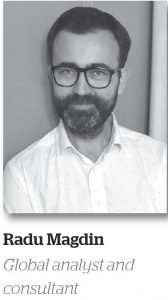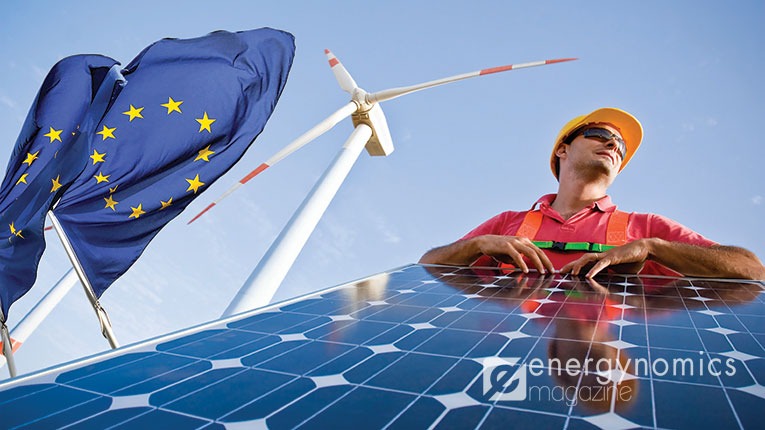Climate changes we are experiencing today are placing Romania and the rest of the EU member states before a myriad of policy options in tackling this emerging challenge, as well as associated opportunities and costs for key stakeholders, including the population and the industry.
 From a political perspective, European leaders have aligned towards achieving the European Commission’s goal of cutting carbon emissions by 55% by 2030, by recently launching the Fit for 55 mega-package. As dubbed by the Commission itself, Fit for 55 is “a set of proposals to revise and update EU legislation and to put in place new initiatives with the aim of ensuring that EU policies are in line with the climate goals agreed by the Council and the European Parliament.”
From a political perspective, European leaders have aligned towards achieving the European Commission’s goal of cutting carbon emissions by 55% by 2030, by recently launching the Fit for 55 mega-package. As dubbed by the Commission itself, Fit for 55 is “a set of proposals to revise and update EU legislation and to put in place new initiatives with the aim of ensuring that EU policies are in line with the climate goals agreed by the Council and the European Parliament.”
However, with this package, a new set of challenges may arise. Its proposals are aimed at providing a coherent and balanced framework for reaching the EU’s climate objectives that is, in the Commission’s words, “fair and socially just” and should maintain and strengthen innovation and competitiveness of the EU industry.
A framing and reframing exercise has already been initiated by the Commission, in full awareness of the package’s differentiated impact on each EU member state, yet further communication efforts, sustainable and holistic, will be necessary at both government and industry level, to better communicate the package’s projected effects. In order to be successful, the governments and the industry must not only align their operational plans, but also communicate together, as a working ecosystem.
With Fit for 55, Europe is the global first mover in turning a long-term net-zero goal into real-world policies, a Bruegel analysis reads, but looking through a different set of lenses, at those countries still struggling to get on the right path of lowering emissions, one can see very specific, interlinked challenges. A basic question remains in capitals: how fit or unfit are we for Fit for 55?
Romania, for example, may be able to meet all the requirements of Fit for 55 at one point in the future, but only with the help of industry and local experts. Along with the transposition of the Green Deal targets for Europe’s climate neutrality, the whole industry must have a plan in place to implement the relevant changes. And even so, these complex objectives cannot be achieved without the urgent support of the public sector.
The other way around, the public sector must take into account the industry’s expertise on what measures should be implemented and at what pace, in order to better respond to the citizens’ needs and ensure that their voices are heard at European level. Alignment with European objectives is not only the industry’s job and should not be used by political actors, in terms of communication, as an argument for dealing with the constituents’ discontent. Action for climate neutrality, when carried out by a working public-private ecosystem, can be an opportunity for all.
It is no secret that Romania, when faced with the need of implementing measures to reduce emissions, will be one of the most affected EU member states – along with Bulgaria, Poland – but unlike the others, Romania has the advantage of not starting from scratch. Romania’s 12.7% target to reduce emissions is not major, due to concerted efforts so far. Statistics have shown that Romania already ranked third in the EU in terms of lowest CO2 emissions per capita in 2019 (with a 65% cut in emissions, compared with 1990). Few countries have gone through such a steep de-industrialization process as Romania since the 1990s, and the orientation of the European bloc towards a cleaner environment is only now turning this trend into a local advantage.
At the same time, we have reached our target for 2020 on the share of renewable energy production, being one of the few states in this positive situation, also due to a well-developed hydro production. In addition, we are aware that our country has a lot of green energy development potential for development, yet further public sector support for private initiatives has been a challenge in itself.
WHAT ROMANIA CAN DO BETTER
The experience of the last 30 years has shown that, without the involvement and support of the industry and experts, political actors are often prone to postponement when it comes to making important decisions. The law on vulnerable consumers is a recent example and so was the liberalization of the electricity and natural gas markets. Such measures had to be implemented many years ago. Decision-making processes, when it comes to Fit for 55, will have to be very different in terms of pace, timeliness and real-world insights.
Fit for 55 is not just a singular goal; it encompasses many other aims which governments must take into account: carbon emissions reduction, energy dependence reduction (an opposite trend compared with the one we see this year), tackling the issue of energy poverty, stimuli for the economy in order to create new jobs and increase the well-being and health of citizens – these are all part of the same, wider scope. Also, preservation of nature and our biodiversity must also be taken into account, as quick and inexpensive solutions for carbon absorption and storage.
This is why the industry, the experts and the public sector must come together and work together. Although in some respects we are doing well, Romania still has a lot of work to do in the coming years, and this path must be paved with the support of all relevant actors: industry representatives, authorities (local and European) and consultants who can bring together all decision-makers to outline viable and realistic plans.
HOW TO COMMUNICATE TO THE GOVERNMENT
Local consulting is thus essential in this process. The issues of low funding, low state support for the recognition of certain costs, encouragement of investment through legislative support and insufficiently trained workforce are often communicated with delay or difficulty to stakeholders. Media outlets are often the sole link between the state and industry, in a one-way conversation that is far from a desirable dialogue and even farther from the ecosystem that we should aim for.
The need for shaping national strategies has become increasingly necessary today. When local and international companies have difficulties in seeing the big picture that the political actors are responsible for, and the media can no longer cover this gap, cooperation with local consultants is a viable approach. Their understanding of industry issues and institutional changes at once can contribute to the advancement of a dialogue that will eventually bring added value to the industry and support the economy at the same time. Through this much-needed dialogue, legislative surprises with a negative impact can be avoided, just as the needs of the industry can be made more easily and realistically known to decision makers.
STATE OFFICIALS MUST LISTEN TO THE INDUSTRY
For now, the measures set out in Fit for 55 are insufficiently addressed to the local level. This creates challenges in seeing the bigger picture, which is currently more of a puzzle, due in part to the EU’s way of making policy. In a process as important as the one being prepared now at the EU level, it is essential that all state institutions cooperate closely – line ministries, relevant authorities and state agencies, and political leaders. Also, all relevant stakeholders responsible for fulfilling and informing about the steps associated with this objective should be coordinated in their public messaging and in shaping a narrative that speaks to the most affected people, backed by concrete measures.
Public messages must be simple and easy to understand, inter-institutional messages must be complete and detailed. Yet building this channel is an ongoing challenge, as it must be based on accurate figures and impact analysis, especially the social impact. Consultants can help close these gaps and avoid their multiplication. Greater openness from the public sector to the industry can lead to the better understanding, shaping and fulfillment of the objectives set at European level and translated to respond to local challenges.
Retaining jobs will be one of the most difficult challenges for Romania in the coming years, as it aligns with the European Commission’s goal of cutting carbon emissions, because the energy industry is still significantly based on coal, but also because the activity of coal extraction and production takes place in an area where job opportunities are extremely scarce. These challenges may delay political decisions, but the industry can provide the help and support that the public sector needs in this particular situation, in a dialogue that is well-mediated and primarily people-oriented.
Delivering on commitments to cut emissions in an effort centered on the people’s well-being is a goal shared, in part, by both public and private actors. Once the government and the industry can communicate better and agree on the challenges of the Romanian context and on what they can build together, meeting European requirements becomes a true opportunity for all. It also helps keep productivity, profitability and avoiding economic pitfalls and social protest.
